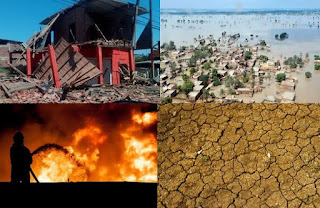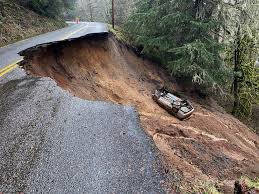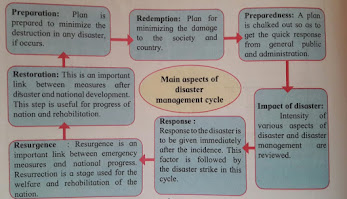Disaster and Disaster Management Part-1
In our daily lives, we may encounter or be exposed to a variety of harmful occurrences that occur often in the environment. And these are referred to be 'catastrophes' or 'disasters'. Floods, wet and dry famines, cyclones, earthquakes, volcanoes, and other natural disasters are among the most common. These are 'all of a sudden' troubles to mankind. And such kinds of dangerous events cause sudden changes in the environment and thereby cause damage to it. A catastrophe or disaster is described by the United Nations as "the sudden event that leads to the huge loss of life and property."
There are disasters like catastrophic disasters. Ex. Cyclones in Odisha, devastating earthquakes in Gujarat and Latur, and often buzzing cyclones in coastal Andhra Pradesh, all result in complete mayhem and significant loss of life and property in the affected areas. Regardless of these factors, life has always returned to normal within a short period of time. We saw in our last blog how weather and climate change brought with them some new facts about climate and weather. Check out the blog if you haven't already.
https://bustlingmindd.blogspot.com/2021/08/environmental-management.html
Natural disasters such as thunderbolts (lightning), floods, and fire, as well as man-made disasters such as accidents, bomb blasts, chemical mishaps in factories, stampedes in large gatherings, riots, and other events, occur around us on a regular basis. They wreak havoc on people and property on a massive scale.
Disasters that have a long-term impact are ones whose after-effects are either severe or get worse over time. Famine, various crop problems, worker strikes, rising ocean levels, desertification, and so on. Factors affecting the environment:
Natural factors: Earthquakes, Floods, landslides, Wind, Rain, predation, etc. are all examples of natural processes which impact an ecosystem.
Manmade factors: Overpopulation, pollution, burning fossil fuels, and deforestation. Changes like these have triggered climate change, soil erosion, poor air quality, and undrinkable water.
There are mainly three types of disaster:
1. Geophysical:
A. Geological: Ex. Earthquake, volcano, tsunami, erosion, etc.
B. Atmospheric: Ex. Hot and cold waves, snowfall, cyclones, floods, etc.
2. Biological:
A. Plant: Ex. Forest fire, weed, fungal disease spreading (Blister), etc.
B. Animal: Ex. Infectious viruses, bite from poisonous animals, etc.
3. Man-made:
A. Unknown: Ex. Poisonous gases, Atomic tests, Accidents, etc.
B. International: Ex. War, fire, bomb blasts, terrorism, rapes, child labor, etc.
Effects of disaster: Bridges collapsing, coastal settlements flooded, and food shortages are just a few of the food-related issues. Houses collapsing and ground cracking are two of the impacts of earthquakes. Forest fires and droughts have a negative impact on the ecosystem. Natural disasters have a significant impact on the economy of a country. That effect is always related to catastrophe and economics, i.e., if a port is destroyed, there will be long-term economic consequences owing to massive rehabilitation costs. One consequence of catastrophe in social leadership is that citizens become confused if local leadership is not strong enough. It has an impact on their willingness to participate in rescue and rehabilitation efforts. During a calamity, administrative issues develop.
Economic: Sudden increases in fund expenditure, shortage of funds for the development of other sectors, decrease in productivity.
Medical: Injuries, emotional/ mental stress, increase in epidemics, death of victims.
Environmental: Partial or complete collapsing of buildings, drying out of water sources, contamination of water, Stinky pollution of the environment due to decomposing corpses of humans and other animals.
Administrative Professional: Stress on workers, collapsing of the transport system, shortage of facilities, etc.
The Disaster Management Act of 2005 established the National Disaster Response Force. This force's divisions are deployed in the army. In total, there are 12 divisions functioning in the nation. Its headquarters are in Delhi, and it is active across the country with the assistance of the army. The National Disaster Response Force is in action in Maharashtra through the state reserve police force. This force's personnel have made significant contributions to disaster relief efforts such as cyclones, cliff-sliding, and building collapses.








